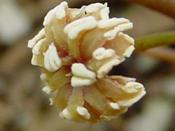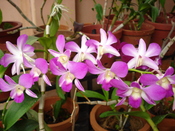Plant Evolution A long 3000 million years ago the earth was not suitable for life as the atmosphere contained little to no oxygen and without this, deadly ultra violet rays from the sun bombarded the unprotected surface. This lead to life beginning in the ocean where it was safe from the sun's rays. It was here that life began with bacteria and small microscopic plants, called algae. Algae is the worlds oldest known fossil. Found in rocks of South Africa and Central Australia up to 3100 years ago. The Age of Algae lasted more than 2000 million years old, which is about half of planet earth's lifetime. During this long period of time, some of the algae developed the ability of being able to make food by using the energy from sunlight to converts carbon dioxide and water into sugar or starch. This process was called photosynthesis.
The next stage in the development in plants was 'The Age of Primitive Vascular Plants.
This new period (the second stage) in plant history occurred within the next 50 million years (400-500 million years ago). Some of these developed root systems stems and leaves. They also formed woody tissue, which created stiffer stems, which eventually developed into tree trunks. They became tree-like and up to 40 meters tall, forming the world's first forest.
'The Age of Seed Bearing Plants' was the next stage of plant history where plants were taken to their next step up in the evolution. This occurred around 280 million years ago. This was also the dinosaur era. Earth began to become a lot drier, and these plants began to adapt to the ever so changing climate. These plants developed the ability to produce seeds to reproduce their new generations. The advantages of this was that these seeds...


